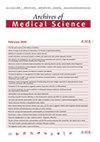塞拉斯托尔通过抑制内质网应激引起的炎症和氧化应激,减轻阿尔茨海默病介导的学习和记忆损伤
IF 3
4区 医学
Q1 MEDICINE, GENERAL & INTERNAL
引用次数: 0
摘要
阿尔茨海默病(AD)是由神经炎症和氧化应激等生物机制引发的。内质网(ER)应激可导致ER中分子伴侣的表达,从而有助于恢复细胞的平衡。研究人员强调了内质网应激在AD进展中的作用,认为调节内质网应激可能是AD的一种潜在治疗策略。我们通过向小鼠背侧海马CA1注射淀粉样β肽25-35(Aβ25-35)诱导AD。一些小鼠在注射 Aβ25-35 之前腹腔注射了塞拉司琼,而另一些小鼠则在注射后注射了塞拉司琼。小鼠接受了巴恩斯迷宫认知测试和莫里斯水迷宫测试,以评估学习和记忆障碍。我们的研究表明,通过减少炎症和氧化应激,使用塞拉斯托前处理可预防AD小鼠的学习和记忆衰退。我们的研究表明,使用西司他醇预处理可通过减少炎症和氧化应激预防AD小鼠的学习和记忆衰退。此外,塞拉司醇还能通过靶向ER应激抑制AD的进展。这些结果表明, Celastrol 治疗可能有益于解决 AD 的学习和记忆障碍,为潜在的神经保护治疗铺平了道路。Celastrol 通过靶向 ER 应激诱导的炎症和氧化应激,有效改善了 AD 小鼠的学习和记忆损伤,这凸显了 Celastrol 作为 AD 治疗剂的潜力。本文章由计算机程序翻译,如有差异,请以英文原文为准。
Celastrol attenuates Alzheimer's disease-mediated learning and memory impairment by inhibiting endoplasmic reticulum stress-induced inflammation and oxidative stress
Alzheimer's disease (AD) is triggered by biological mechanisms such as neuroinflammation and oxidative stress. Endoplasmic reticulum (ER) stress can lead to the expression of molecular chaperones in the ER, which helps in restoring cellular homeostasis. Researchers have highlighted the role of ER stress in the progression of AD, suggesting that regulating it could be a potential treatment strategy for AD.We induced AD in mice by injecting amyloid beta-peptide 25-35 (Aβ25-35) bilaterally into the CA1 of the dorsal hippocampus. Some mice were administered celastrol intraperitoneally before the Aβ25-35 injection, while others received it after the injection. The mice underwent the Barnes maze cognitive test and Morris water maze test to assess learning and memory impairment. Levels of interleukin (IL)-1β, tumor necrosis factor alpha, and IL-10 were measured to evaluate inflammation, while total antioxidant capacity, catalase, Malondialdehyde, and superoxide dismutase levels were analyzed to estimate oxidative stress.Our study showed that pre-treatment with celastrol could prevent learning and memory decline in AD mice by reducing inflammation and oxidative stress. Celastrol also inhibited AD-induced inflammation and oxidative stress. Additionally, celastrol suppressed AD progression by targeting ER stress. These results suggest that celastrol treatment could be beneficial in addressing learning and memory deficits in AD, paving the way for potential neuroprotective treatments.Celastrol effectively improved learning and memory impairments in AD mice by targeting ER stress-induced inflammation and oxidative stress. This highlights the potential of celastrol as a therapeutic agent for AD.
求助全文
通过发布文献求助,成功后即可免费获取论文全文。
去求助
来源期刊

Archives of Medical Science
医学-医学:内科
CiteScore
4.90
自引率
7.90%
发文量
139
审稿时长
1.7 months
期刊介绍:
Archives of Medical Science (AMS) publishes high quality original articles and reviews of recognized scientists that deal with all scientific medicine. AMS opens the possibilities for young, capable scientists. The journal would like to give them a chance to have a publication following matter-of-fact, professional review by outstanding, famous medical scientists. Thanks to that they will have an opportunity to present their study results and/or receive useful advice about the mistakes they have made so far.
The second equally important aim is a presentation of review manuscripts of recognized scientists about the educational capacity, in order that young scientists, often at the beginning of their scientific carrier, could constantly deepen their medical knowledge and be up-to-date with current guidelines and trends in world-wide medicine. The fact that our educational articles are written by world-famous scientists determines their innovation and the highest quality.
 求助内容:
求助内容: 应助结果提醒方式:
应助结果提醒方式:


